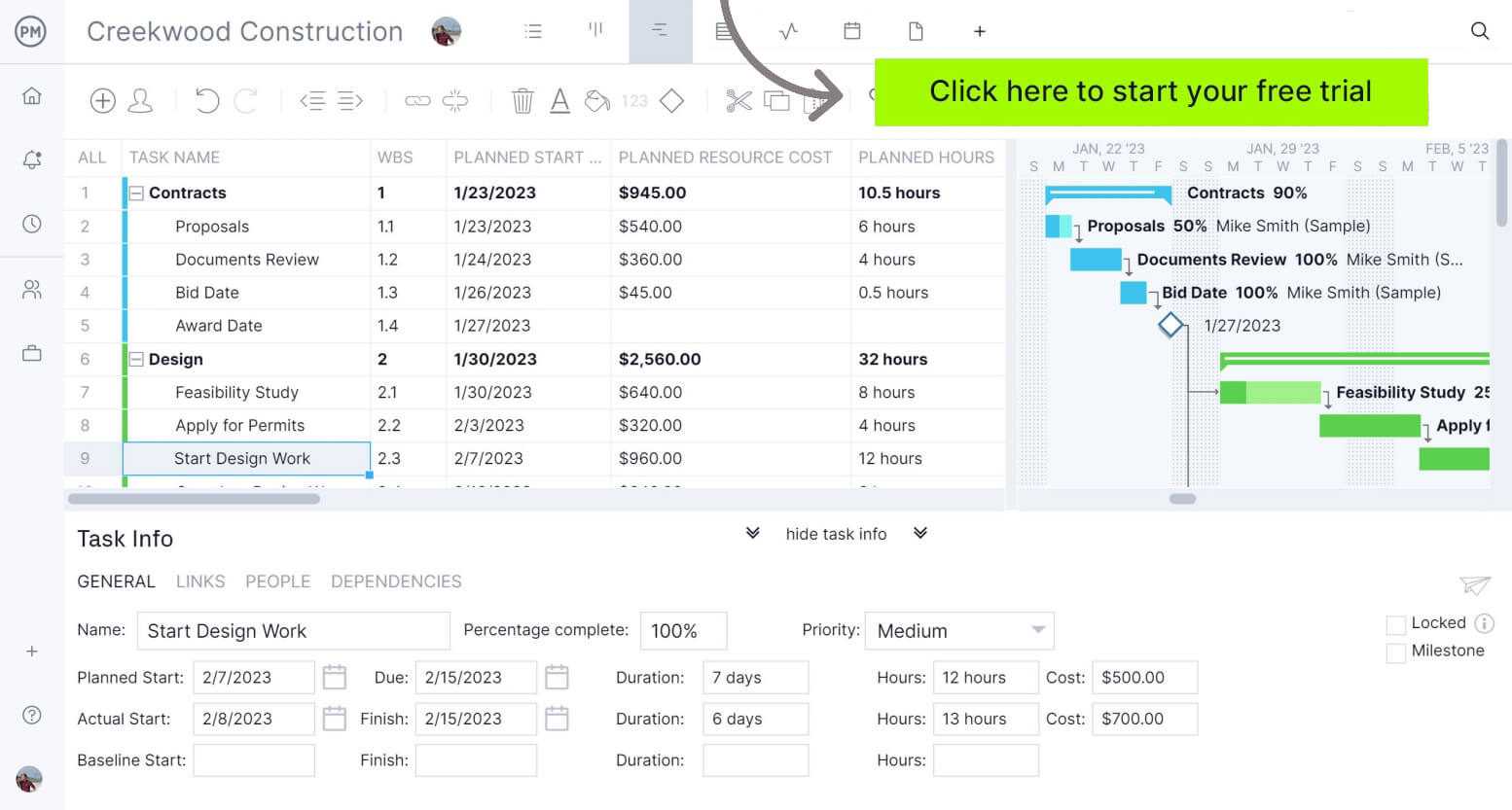Construction projects must adhere to many codes and regulations. While some regulations are federal, many change depending on the municipality where the project is being done. Before a construction project can be completed, it must pass a building inspection.
Building inspections vary, but they’re part of the construction process for commercial, residential and industrial projects. What is a building inspection, when does it happen and what does it cover? We explain everything you need to know.
What Is a Building Inspection?
A building inspection is a review of the work done on a construction project by a building inspector, who is employed by the city, township or county in which the project is located. The building inspector will review the job site to ensure it complies with safety regulations and building codes. It’s a comprehensive assessment of the building’s structural integrity, safety and compliance with local building codes and regulations.
The building inspector is usually certified in one or more of the professional building disciplines to have the skills and knowledge needed to judge whether a building meets code requirements. There are different certifications for residential and commercial building inspectors, as well as inspectors who focus on plumbing, electrical or mechanical project aspects.
It’s crucial to pass building inspection to deliver the project successfully. General contractors must convey to their crew and subcontractors the code requirements for every aspect of the job to ensure the work passes inspection. This must be all planned. Not doing so risks having to bring the work up to code, sometimes razing structures and rebuilding them, which will delay the schedule and add costs that will negatively affect the project’s profit margin.
Project management software can help plan and organize tasks to ensure the project meets all project and regulatory requirements. ProjectManager is award-winning construction project management software with robust Gantt charts that assign tasks to teams and create timelines. Nothing falls through the cracks. All four task dependencies can be linked to avoid costly delays. Filter for the critical path to identify essential tasks to ensure codes are complied with. Then set a baseline to track progress in real time to help stay on schedule. Get started with ProjectManager today for free.

When Should You Conduct a Building Inspection?
A building inspection is routinely done several times over the life cycle of the construction project. The first time is before the project begins. A building inspection occurs before the property on which the project will be built is purchased. This is done to identify potential problems or hazards on the construction site that can impact the property’s value.
After this initial inspection, if the property is bought and construction begins, other inspections take place throughout the project. This ensures that the work is up to code and other local regulations. For example, once plumbing or the electrical system is installed, they’re inspected for safety, code compliance, etc.
Building inspections also are required before covering or concealing any work. The last inspection takes place during the post-construction phase after grading and the building is completed and ready for occupancy. This leads to the permit reaching its final status and utility releases for gas and electricity will be issued. After construction is completed and the building is in use, building inspections will still be conducted every few years to ensure the property’s longevity.
What Is a Building Inspection Report?
There are different types of building reports, but all are used to detail the building inspection and ensure that due diligence has been done. The building inspection report is typically included as a condition of the construction contract and, as noted, is done by a qualified building inspector, surveyor or builder.
A building inspection report is made up of photos of the property and building, the address of the property and the name of the applicant. It also lists the name, contact details and qualifications of the inspector, including their builder’s registration number.
The bulk of the building inspection report is made of a summary of any significant findings to be addressed or repaired. The property’s condition will also be described in detail, evaluating the property for structural soundness. If necessary, key maintenance issues, code violations and so forth will be identified.
What Does a Building Inspection Cover?
The building inspection examines the condition of the property and structure to determine if it’s sound and meets legal requirements. The building inspector will check on the stability and compliance with the safety regulations of the building. This includes the following.
- Roofing
- Structural integrity
- Exterior inspection
- Interior inspection
- Grounds
- Mechanical and electrical
- Plumbing
- Heating, ventilation and cooling (HVAC)
Building Inspection Checklist
As one might expect, a building inspection is thorough. There are no corners to cut. Therefore, a building inspector isn’t expected to know everything. They are experts in the field and typically use a building inspection checklist, like this one from the United States General Services Administration or this commercial final expectation requirements checklist from the city of Tampa, Fla., to ensure they don’t miss anything.
Types of Building Inspections
There are many different types of building inspections. Almost every phase and feature of the building has specific requirements. From inspections of masonry pre-grout, wall drainage piping and the roof system to all frame and rough, insulation and the final inspection, the list of building inspections is long and varied. Rather than go into detail, here are some of the larger, more comprehensive types of building inspections one finds on a construction job site.
1. Commercial Building Inspection
Evaluates the building and/or property used for commercial purposes and is intended to drive profit from operations or rental income. Commercial construction can include cafes, retail stores, warehouses, factories, office buildings, multi-family and single-family residential units, restaurants, etc. A commercial building inspection seeks to discover any issues with the property. They tend to occur at the start and end of a tenancy or during the buying or selling of the property.
2. Pre-Purchase Building Inspection
A qualified inspector will assess the property’s condition. This pre-purchase building inspection covers a range of areas, from roofs to walls. It identifies faults and informs the potential buyer as to whether they can be repaired and, if so, what the cost for those repairs would be. Certain areas of construction procurement aren’t covered by the pre-purchase building inspection, such as concealed plumbing, air-conditioning, gas fittings and fixtures, etc.
3. Structural Building Inspection
A structural engineer executes the visual inspection to confirm the structural integrity of the building’s weight-bearing elements, such as its framing, foundation, beams, columns, posts or trusses. A structural building inspection is done when a building or property owner is questioning how sound their structure is or when an element of the building requires examination.
Building Safety Inspection
A building safety inspection is an on-site walk-through that identifies hazards to occupants and personnel. It then offers remedial action to resolve these issues. There’s also a review of safety equipment on site, such as emergency eyewash, shower, fire extinguishers, first-aid kits, etc., to ensure it’s in proper working order.
Related: 17 Free Excel Construction Templates
What Is the Average Cost of a Building Inspection?
The price of a building inspection can vary depending on the location of the municipality in which the property is located. It can also vary depending on the type of building being inspected, such as a condominium, single-family home, duplex, three-story triplex or larger property. The price range for a building inspection can go from a few hundred dollars on the low end to closer to $1,000 for a larger property.
What Is a Building Inspector?
A building inspector is an expert in the construction industry with experience and technical knowledge of one or more specific building disciplines. They can review and determine the condition of a building or parts therein to ensure that the property is safe and the work is code-compliant.
What Does a Building Inspector Do?
A building inspector does many things depending on what they’re tasked with reviewing. They make field inspections of industrial, commercial and residential buildings during various stages of construction and remodeling to ensure proper and safe installation of routine and complex building systems as well as making sure they conform to codes.
How ProjectManager Helps You Plan Building Inspections
To pass a building inspection, the construction work must be completed properly. This involves planning, as we noted above. Powerful Gantt charts organize tasks and give the general manager oversight of the construction crew and subcontractors alike to ensure they’re staying on schedule, keeping to the budget and meeting quality standards. But that just sets the stage for a well-delivered project. Throughout the construction process, general managers must communicate with their crew and subcontractors, who need to be able to update on-site inspections. ProjectManager is award-winning construction project management software that can do all that and more.
Communicate With Your Team and Share Files
Whether it’s when building inspectors are on-site or if it’s directing subcontractors to work within code regulations, communication is king. Having software that connects everyone in real time and has unlimited file storage means teams can attach photos to tasks and comment at the task level. This helps ensure that the work is completed properly. Stay in real-time communications with the construction crew whether in the office, on the job site or anywhere in between.

Use the Mobile App for On-Site Inspections
Team members working on the job site can use the ProjectManager mobile app to log hours, take photos and more. They’re always able to get into the software, update their status and ask questions to ensure that their work is done right the first time. This helps when working with a building inspector or making a punch list to confirm that the project can be completed, handed off to the project owner and the general contractor gets paid.

Related Construction Content
Building inspection is one small part of the construction project management process. If you’re interested in delving deeper into this subject, there are many more pieces of related content available to read. Here’s a sampling of some construction content.
- Construction Site Management: A Guide to Site Inspection and Site Planning
- Post-Construction Phase: How to Close a Construction Project
- 26 Construction Documents (Templates Included)
ProjectManager is online construction project management software that connects teams whether they’re in the office, out on the job site or anywhere in the world. They can share files, comment at the task level and stay updated with email and in-app notifications. Get started with ProjectManager today for free.



